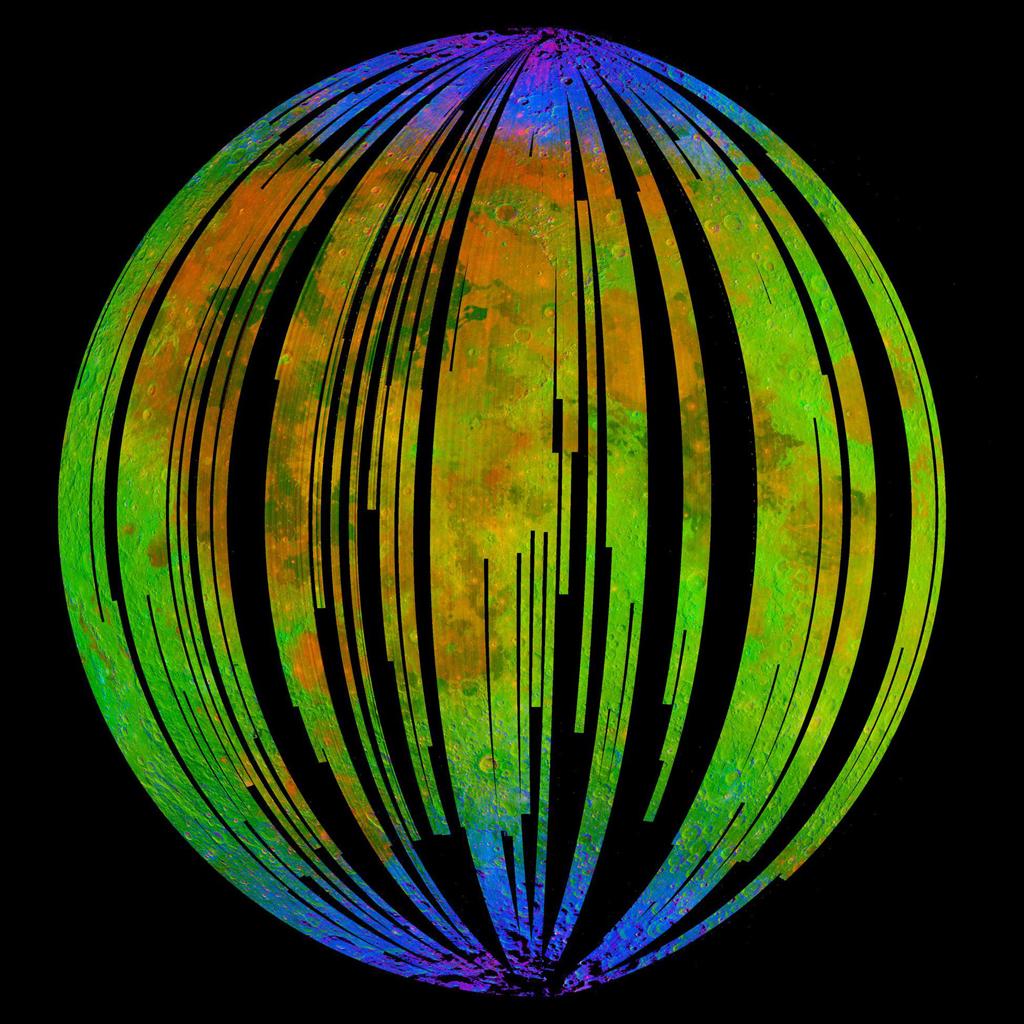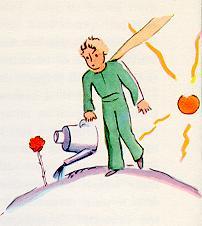NASA | JPL-Caltech | Moon Mineralogy Mapper | 2020 Sep 02
While our Moon is airless, research indicates the presence of hematite, a form of rust that normally requires oxygen and water. That has scientists puzzled.
Mars has long been known for its rust. Iron on its surface, combined with water and oxygen from the ancient past, give the Red Planet its hue. But scientists were recently surprised to find evidence that our airless Moon has rust on it as well.
- The blue areas in this composite image from the Moon Mineralogy Mapper (M3) aboard the Indian Space Research Organization's Chandrayaan-1 orbiter show water concentrated at the Moon's poles. Homing in on the spectra of rocks there, researcher found signs of hematite, a form of rust. Credit: ISRO/NASA/JPL-Caltech/Brown University/USGS
A new paper in Science Advances reviews data from the Indian Space Research Organization's Chandrayaan-1 orbiter, which discovered water ice and mapped out a variety of minerals while surveying the Moon's surface in 2008. Lead author Shuai Li of the University of Hawaii has studied that water extensively in data from Chandrayaan-1's Moon Mineralogy Mapper instrument, or M3, which was built by NASA's Jet Propulsion Laboratory in Southern California. Water interacts with rock to produce a diversity of minerals, and M3 detected spectra - or light reflected off surfaces - that revealed the Moon's poles had a very different composition than the rest of it.
Intrigued, Li homed in on these polar spectra. While the Moon's surface is littered with iron-rich rocks, he nevertheless was surprised to find a close match with the spectral signature of hematite. The mineral is a form of iron oxide, or rust, produced when iron is exposed to oxygen and water. But the Moon isn't supposed to have oxygen or liquid water, so how can it be rusting?
The mystery starts with the solar wind, a stream of charged particles that flows out from the Sun, bombarding Earth and the Moon with hydrogen. Hydrogen makes it harder for hematite to form. It's what is known as a reducer, meaning it adds electrons to the materials it interacts with. That's the opposite of what is needed to make hematite: For iron to rust, it requires an oxidizer, which removes electrons. And while the Earth has a magnetic field shielding it from this hydrogen, the Moon does not. ...
Has Earth’s Oxygen Rusted the Moon for Billions of Years?
University of Hawaii, Mānoa | 2020 Sep 02
Widespread Hematite at High Latitudes of the Moon ~ Shuai Li et al
- Science Advances 6(36):aba1940 (02 Sep 2020) DOI: 10.1126/sciadv.aba1940

